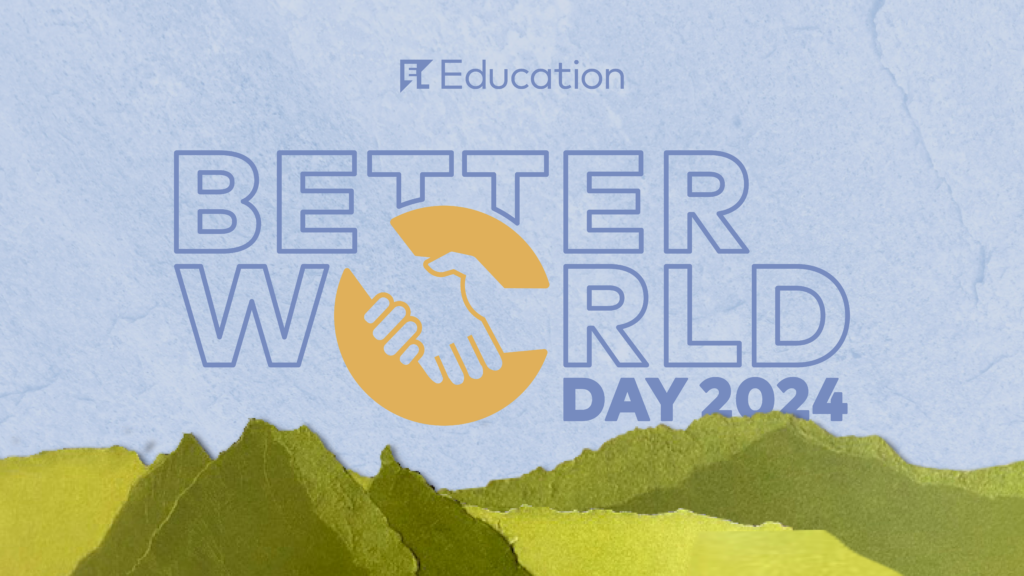How Educators Can Help Students Understand Their Own Neuroscience, and In Turn, Foster Positive Classroom Behaviors
By: Reagan Rogers, M.S., Psy.S., National Director of Invo Healthcare’s IMPACT Program
In the wake of the pandemic, families, educators, and policymakers are all paying close attention to the impact of trauma on learning, as well as on students’ physical and mental health. Surgeon General Vivek Murthy has described mental health as “the defining public health crisis of our time,” and recently declared that challenges stemming from the issue were leading to “devastating effects” among young people.
Schools are increasingly serving as first responders to students’ mental health. One study found that, even in 2018, schools were the second-most frequent provider of mental health services for young people, surpassing general medical settings, child welfare settings, and juvenile justice settings as likely providers of care. They’re also getting better at detecting adverse childhood experiences (ACE), recognizing that trauma can be caused not only by tragic “big” events such as the loss of a parent or being a victim of abuse but also by chronic stress such as instability at home or family conflict. Because of that, it is not surprising that the school teams and educators I speak with every day are eager for practical strategies that can help students. In my work with school districts, I find the place to start is helping educators understand how a child’s brain develops — and then, in turn, help students develop a better understanding of how their feelings and behavior are impacted by their own personal development.
Middle School Development and Neuroplasticity
Let’s take the middle school age, for example. During this age, students are undergoing many changes. Some of the most important changes take place in their brains, profoundly but often subtly impacting their emotional regulation, decision-making, and social behavior. All three of these skills are influenced by the development of the prefrontal cortex, which plays an important role in controlling a person’s emotions, thoughts, and actions, and it undergoes significant changes during adolescence. One key process during this phase is called “synaptic pruning,” which strengthens essential neural connections and eliminates unnecessary ones. As this process progresses, adolescents will typically become better at making sound decisions, navigating complex social situations, and regulating their emotions. However, since these changes take place gradually, and each part of the brain does not necessarily develop at the same rate as others, adolescents sometimes act in inconsistent ways– and that behavior is often exacerbated by ACEs.
During this crucial phase of development, cultivating self-awareness helps students gain a sense of responsibility for their personal behavior and growth. Once they become more aware of their thoughts and emotions, students can be empowered to identify areas where they may want to make changes. This process is also influenced by how their brains are developing. The brain adapts to novel experiences over time by creating new neural pathways, which enable it to adapt to novel challenges and tasks. This quality of the brain is called “neuroplasticity.” When middle school students repeatedly engage in a behavior, their brains recognize patterns and create neural pathways to perform the behavior more efficiently. With this knowledge of how their students’ brains are developing, teachers can adapt their responses to students in a manner that encourages greater self-awareness and positive behavioral change.
Awareness of their students’ stages of psychological development helps teachers better understand the mental and emotional realities lived by their students, and how those might affect their behavior in the classroom.
A Trauma- and Neuroscience-Informed Example
Courtney, a 14-year-old student, tries her best to navigate her school days but often presents with significant behavioral challenges. In addition to the challenges of adolescence, a parent was recently incarcerated. The stress and anxiety she is facing are resulting in verbal outbursts and high emotionality that often disrupts the classroom. It would not be uncommon for a student like Courtney to be met with disciplinary action. However, Courtney’s teacher approaches her with understanding and compassion. Incorporating Courtney’s trauma history, the teacher empathetically grasps the weight of her recent family struggles. She recognizes that managing impulses and emotions is particularly difficult for adolescents. Courtney’s teacher offers support rather than punishment. With this awareness, the teacher fosters a nurturing environment where Courtney feels safe, valued, and understood, which assists her in navigating through these challenging times with care and empathy.
In response, the teacher adopts a proactive approach tailored to Courtney’s needs. Understanding the importance of structure and predictability for adolescents navigating emotional upheaval, the teacher implements a consistent and visually accessible schedule to provide Courtney with a sense of stability. Recognizing the benefits of mindfulness practices in promoting emotional regulation, brief mindfulness exercises are integrated into the classroom routine to help Courtney and her peers manage stress and focus their attention.
The teacher adopts a supportive stance by praising Courtney’s incremental achievements, no matter how small. This positive reinforcement not only acknowledges Courtney’s efforts but also fosters her confidence and motivation to succeed. By addressing Courtney’s behavioral challenges with empathy and targeted support, the teacher creates a nurturing learning environment conducive to Courtney’s emotional well-being and academic success.
This example illustrates the important role that teachers can play in helping students develop social and emotional competence. Courtney’s teacher recognizes that her classroom can be a place where her student finds consistency, stability, and support, regardless of whatever Courtney may be experiencing outside of the classroom. Her teacher’s proactive approach to addressing Courtney’s needs affords her the opportunity and support needed to develop enhanced self-awareness and greater self-regulation of her emotions. Such an approach is not only a proactive and empathetic response to the challenges Courtney may be facing at home, but also one that is supported by neuroscience.
In Conclusion
Awareness of the different phases of adolescent brain development, as well as the impact that ACEs can have on students’ capacity to learn, is key to understanding some of the factors that affect students’ ability to show up in the classroom. Leveraging that knowledge can help teachers proactively address the behavioral challenges that emerge in their classroom. Utilizing an approach for addressing these challenges that is supported by neuroscience empowers teachers to foster a positive learning environment for all students and guide them toward adopting habits that will sustain them in adulthood.
Reagan Rogers, M.S., Psy.S. is the National Director of Invo Healthcare’s IMPACT program. IMPACT (Integrated Multidisciplinary Program to Address Childhood Trauma) is a groundbreaking program that integrates experienced mental health and behavioral health teams into the natural school environment. In her role, she oversees this unique, multidisciplinary team-based model for K-12 students in over 200 schools nationwide.





